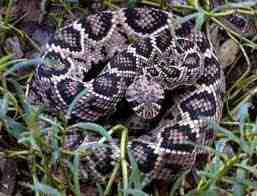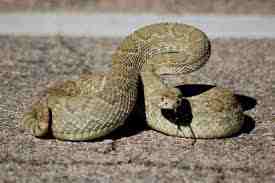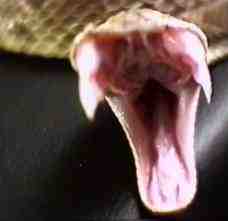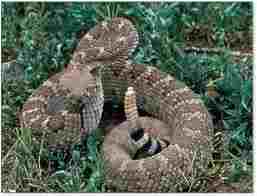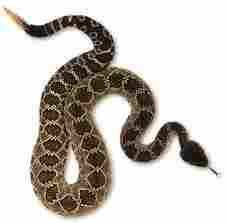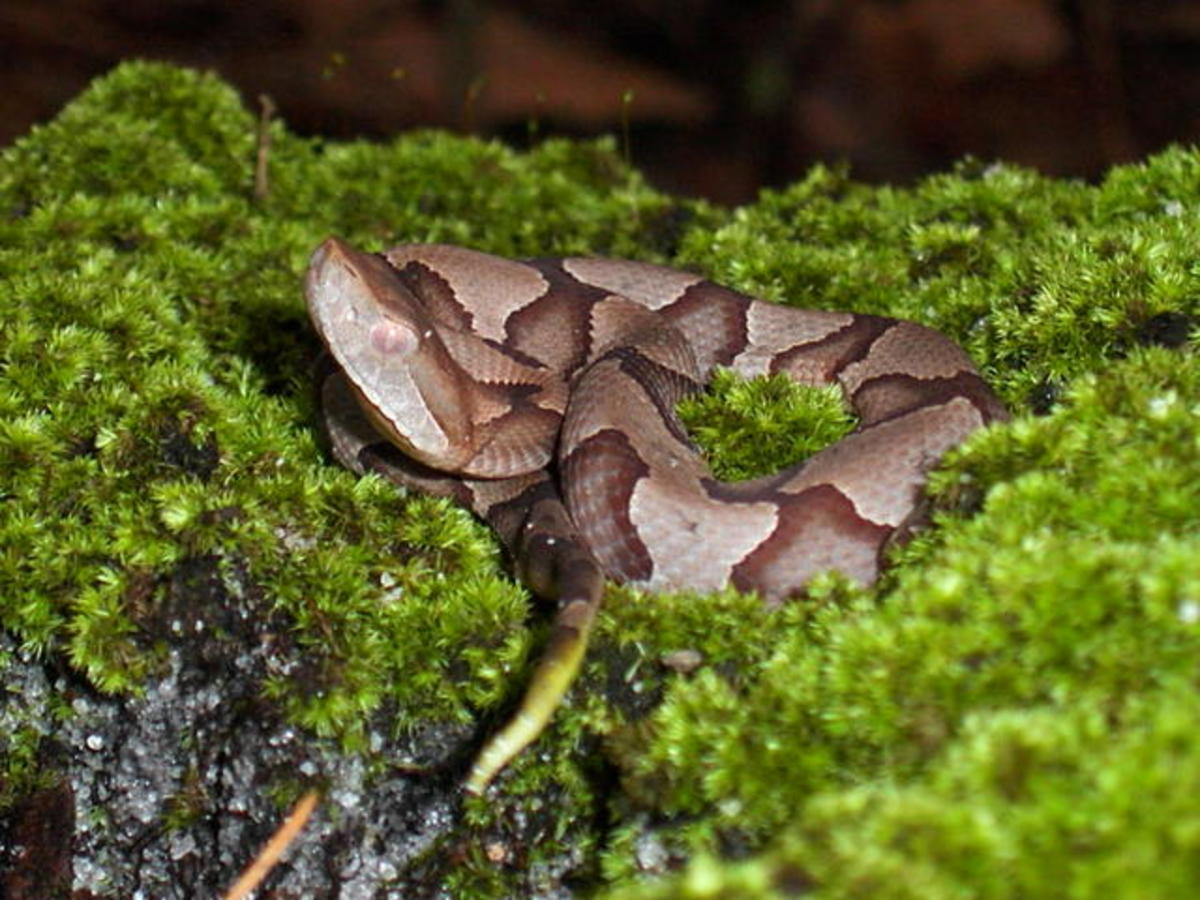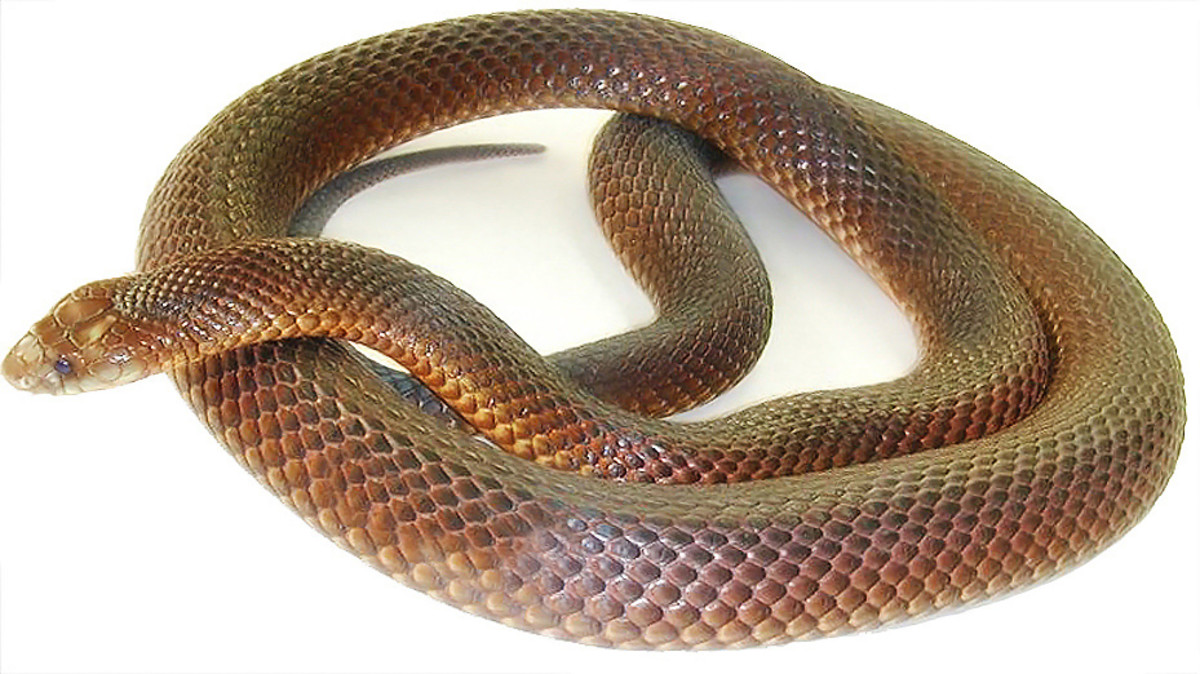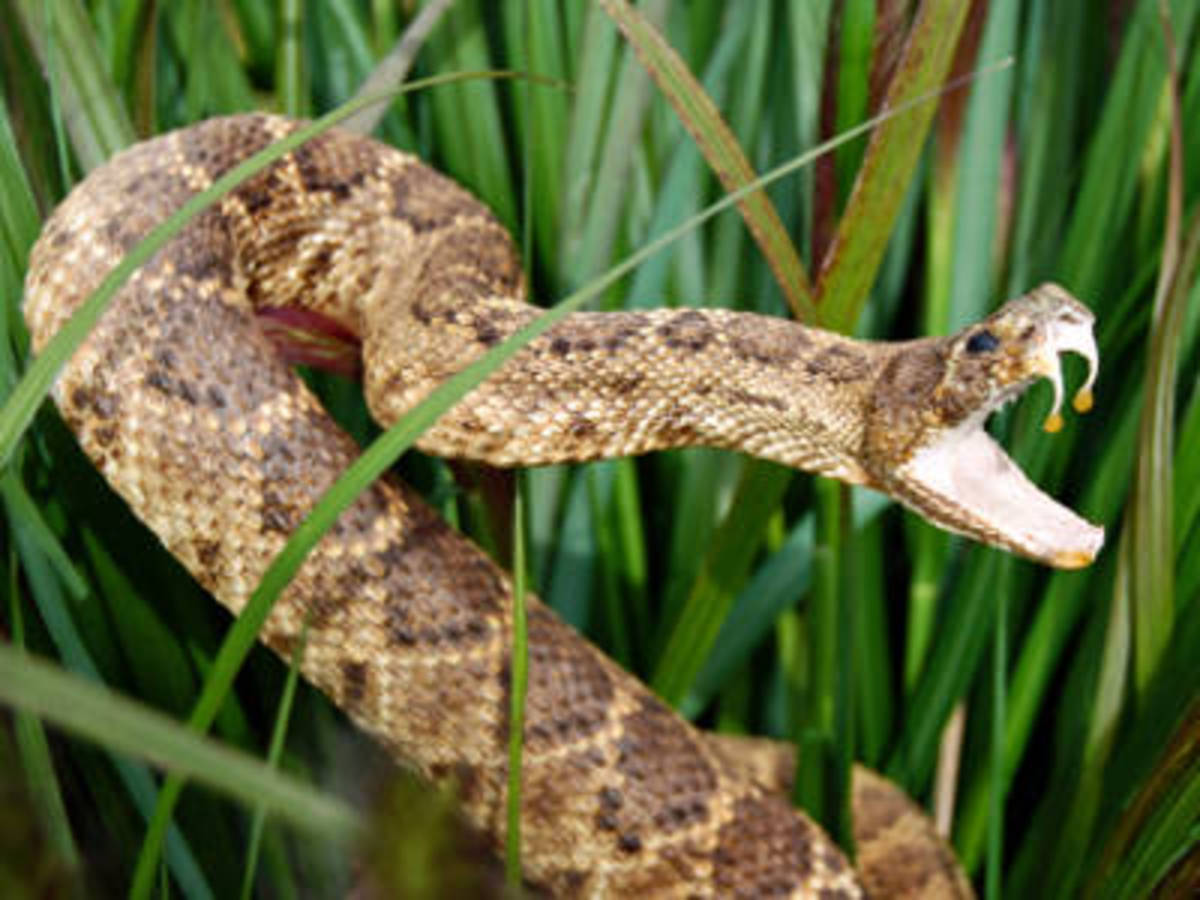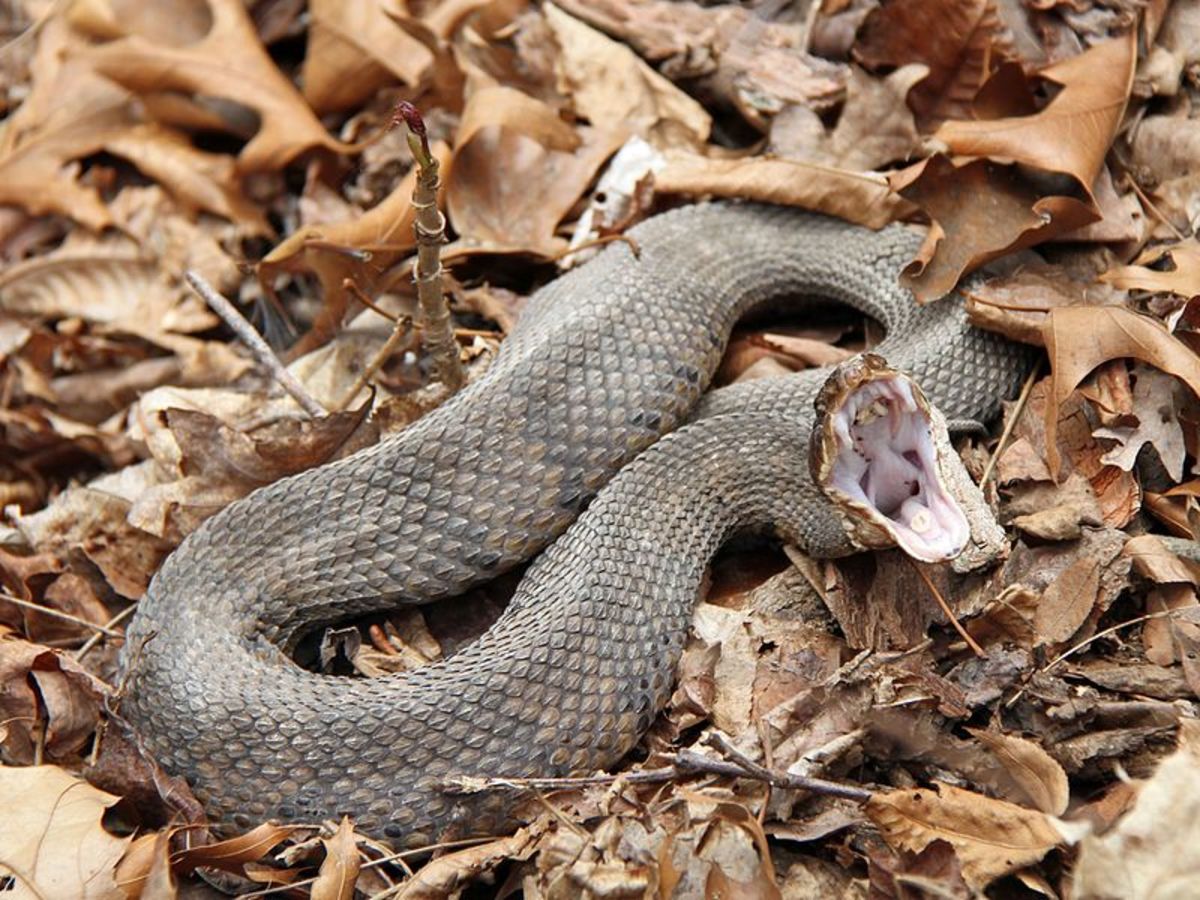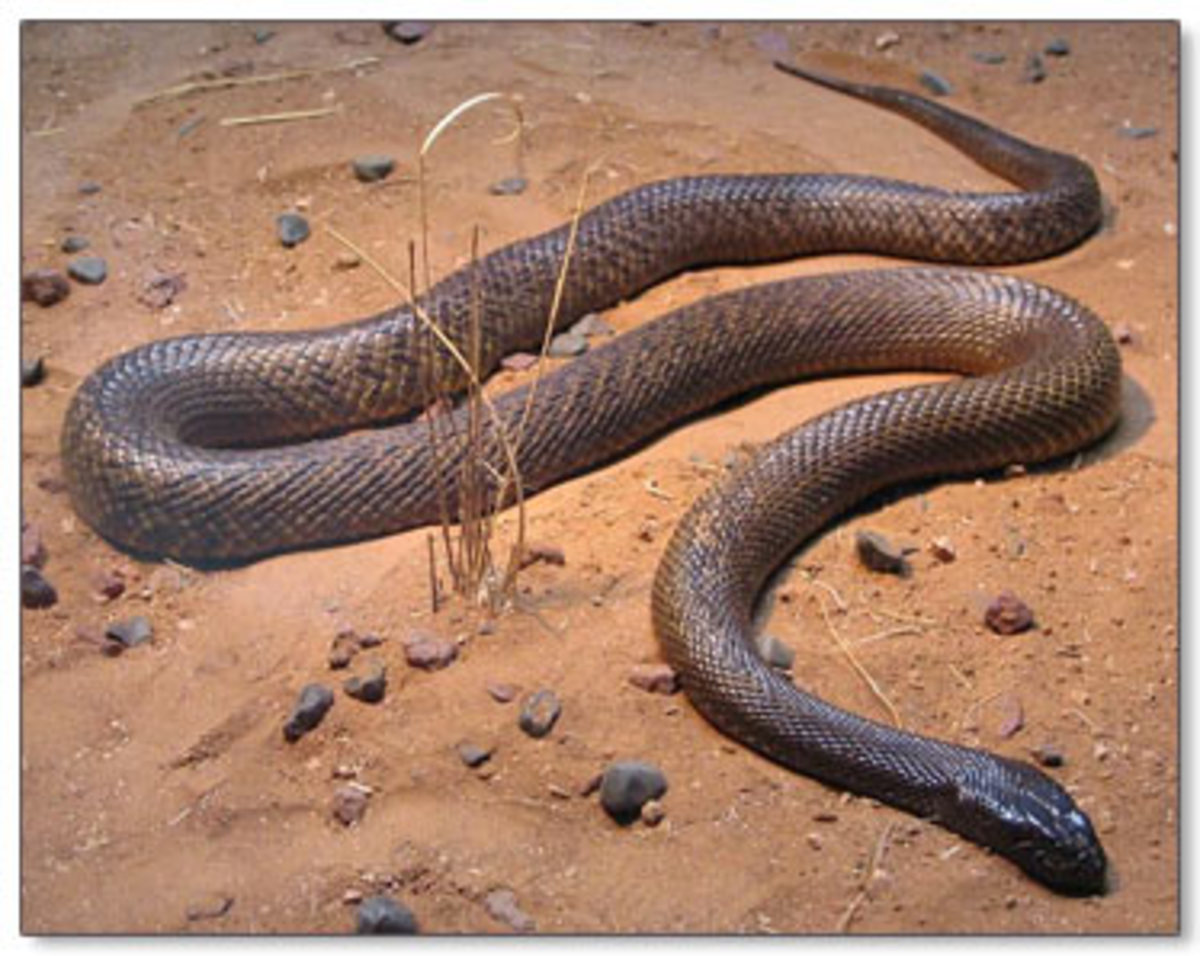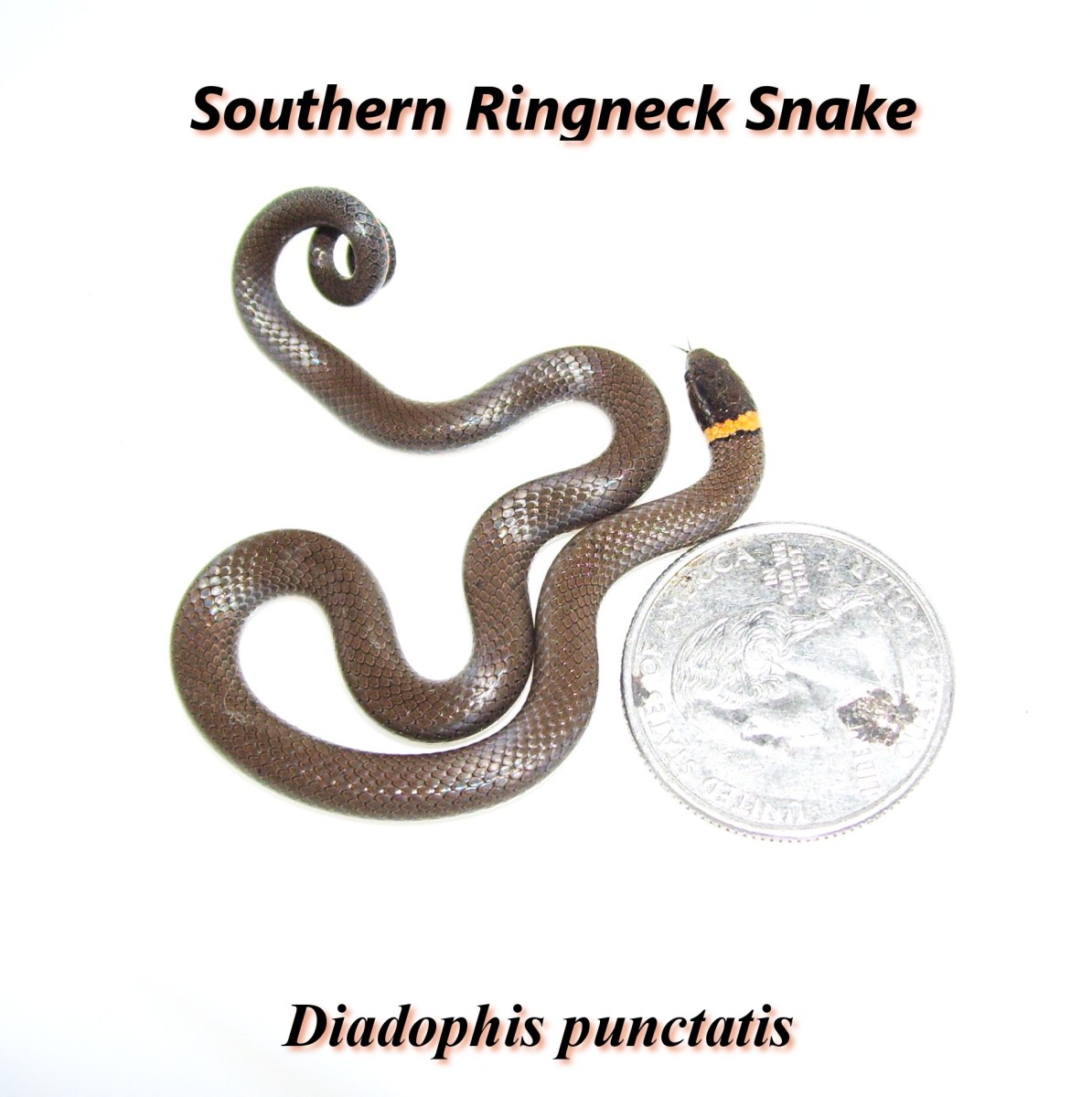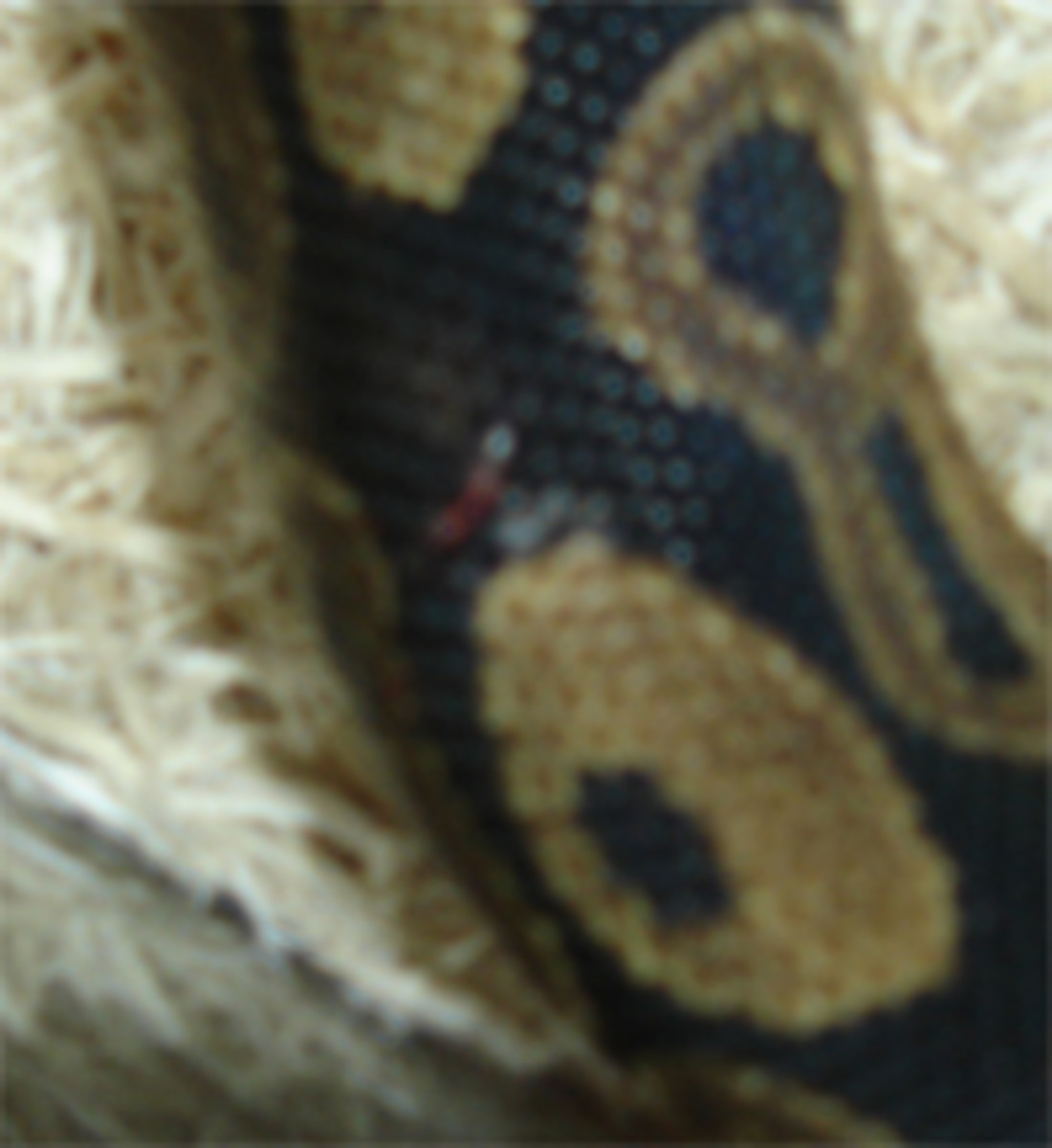The Dangerous Mojave Desert Rattlesnake
They really dont want to hurt us.
Click thumbnail to view full-size




Snakes are Beautiful Creatures, Best Left Alone
Rattler!
Despite all we have learned about venomous creatures since television featured programs starring spiders, scorpions and snakes, our minds are still hard-wired with the images produced by Hollywood; life in the old west of the US of A and the creature feared and shot at more than any other, except perhaps Clint Eastwood - the Rattlesnake, usually shortened to Rattler!
Curiously, and due to our usual skewed judgement, rattlesnakes are the species of serpent which presents the least danger to man, as he announces his presence from as much as 25 meters away by rattling his tail bones together and saying, “Pass by, stranger, and fare ye well, but keep your bloody great horse from stamping on me or I’ll throw a hissy fit and you‘ll regret it.” Or words to that effect.
But no matter, out came the six-shooters and screen cowboys exhibited their machismo by blasting the long suffering rattlesnake to kingdom come. Few of us back then mused that you had as much chance of hitting a small target, like a moving snake, from a bucking horse with a pistol, as you would in hitting the moon with a quarrel, (look it up). But there was one piece of honesty in that footage. Rattlesnake venom is a lot more dangerous to your horse than it is to the riders, which is why horses rightly fear snakes.
Of the 30 or so types of rattlesnakes, nearly all are confined to the American continent: North, Mid and South. The word “crotalus” is from the Greek and means “castanet,” although the sound is less well defined in all the ones I have heard give warnings. Another piece of folklore that needs dispelling is the myth that they cannot hear, they can, but have no external ears.
I have found through limited research than many venomous creatures, who want you to leave them alone; they don’t really want to harm you, don’t inject all their venom in a strike. I have found that common paper wasps are capable of merely brushing you with their sting and leaving a tingling sensation, giving you a chance to bugger-off before they let you have the thermal lance!
Those who panic and flap around after wasps, or take mighty swings at it with an object big enough to stun an ox, don’t merit, or get, consideration, and the annoyed wasp rightly sends them howling. I cannot understand the childish fear of these minute and humble creatures; I leave them alone and they never sting me. (yes, they will invade your space; they see it as theirs, based on their accurate sumnation that they have been here millions of years before you).
I have been more circumspect with snakes which have crossed my path - or theirs, mine. But only to the extent of halting in my tracks, perhaps withdrawing a foot or two so the creature senses the lack of threat and moves calmly away, or even curls up and goes back to sleep. Instinct, lost to man, is highly developed in wild creatures and they can usually sense your intent immediately.
In fact, like human teenagers, the immature snakes can often be the more dangerous as they have not learned through experience to sort out friend from foe and may let you have the whole dose of venom; they are able to hunt, and have venom as soon as they are born.
Rattlesnakes are actually great friends to man. Rats and other small rodents are high on their menu; perhaps less fortunately, are small birds and their eggs. A rattlesnake’s venom typically kills its prey within 20 seconds or so and the creature will follow larger prey until its venom does take effect. You, your horse, or your dog don’t fit into the category of prey for these snakes, so their strike is purely defensive and you won’t be chased as you sensibly leave the area. (some snakes will chase man, like the taipans or mambas, etc.).
If you do get bitten severely - or at all - you need professional help quickly and an antivenin administered.
The rattlesnakes shed their skin due to growth once, or more, per year and as they do another “bead” is added to the tail. So you can get an idea of a snake’s age by the number of “rattles” he has. Make sure you count them from distance, as the snake can strike 2/3rds of its body length faster than your eye can follow. Another good tip to remember is that when the rattles get wet they make no sound!
This is the most dangerous of the family Crotalinae, the rattlesnakes. He is found in Mexico and in several of the southern states of the US. His name is a misnomer, because his range well exceeds the Mojave Desert. There are two varieties, possessing distinctive neurotoxin venom (most rattlers are haematoxic). Of the two, class A and B, the A is 10 times more potent and you will be unlucky if getting bitten by this snake. These rattlesnakes are brown to pale green in color, with a dark diamond pattern down the back. They all look very similar and only experts can tell the more dangerous from the other, so treat all rattlers with caution and respect, as they will surely treat you.
Rattlesnakes are eaten as human fare in parts of Mexico and the US, I believe. In Mexico, the snake is feared and called “Vibora de Cascabel.” Many peoples south of the border know nothing about snakes, cannot tell the harmless from the lethal and, so, kill them all regardless. They run them over sooner than slow, or drive round them and show really disgusting ignorance which I wish would cease.
Yet the Mexicans protect and love their Monarch butterflies…go figure!

